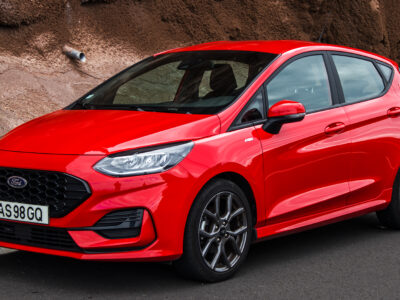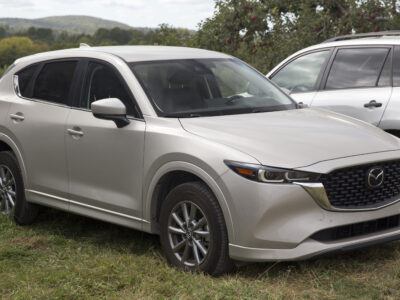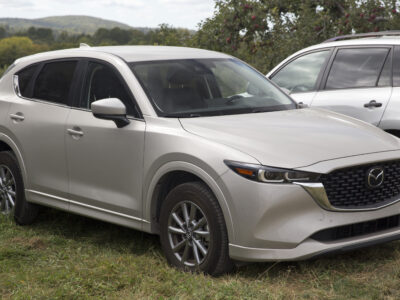
Toyota 4Runner vs Toyota RAV4 (2025 Comparison): Which SUV Fits You Best?

When choosing between the Toyota 4Runner and Toyota RAV4, you’re essentially deciding between two philosophies of adventure. Both wear the Toyota badge with pride, but they cater to very different lifestyles. The 4Runner is a rugged, truck-based SUV built for off-road dominance, while the RAV4 is a refined crossover designed for efficiency, comfort, and everyday practicality.
- Pricing and Trims
- Performance and Powertrain
- Fuel Economy Comparison
- Off-Road Capability
- Towing Capacity
- Interior Comfort and Space
- Cargo Capacity
- Technology and Infotainment
- Safety and Driver Assistance
- Reliability and Warranty
- Maintenance and Ownership Costs
- Ride and Handling
- Dimensions and Ground Clearance
- Fuel Type and Range
- Verdict: Which Toyota SUV Wins?
Pricing and Trims
| Model | Starting MSRP | Top Trim MSRP | Trim Range |
|---|---|---|---|
| Toyota RAV4 (2025) | $29,475 | $40,030 (Limited Hybrid) | LE, XLE, XLE Premium, Adventure, Limited, TRD Off-Road, Hybrid Woodland |
| Toyota 4Runner (2025) | $42,285 | $54,920 (TRD Pro) | SR5, TRD Sport, TRD Off-Road, Limited, TRD Pro |
Verdict: The RAV4 is significantly more affordable, making it a better fit for urban drivers and budget-conscious families. The 4Runner demands a premium for its off-road hardware and larger V6 engine.
Performance and Powertrain
| Specification | Toyota RAV4 | Toyota 4Runner |
|---|---|---|
| Engine | 2.5L 4-Cylinder | 4.0L V6 |
| Horsepower | 203 hp | 270 hp |
| Torque | 184 lb-ft | 278 lb-ft |
| Transmission | 8-Speed Automatic | 5-Speed Automatic |
| Drivetrain | FWD / AWD | RWD / 4WD |
The RAV4’s 2.5-liter engine delivers smooth acceleration and refined daily performance, while the 4Runner’s old-school 4.0-liter V6 offers brute strength with a thirstier appetite. The RAV4 Hybrid boosts output to 219 hp while improving efficiency dramatically.
Fuel Economy Comparison
| Model | City (mpg) | Highway (mpg) | Combined (mpg) |
|---|---|---|---|
| RAV4 (Gas) | 27 | 35 | 30 |
| RAV4 Hybrid | 41 | 38 | 40 |
| 4Runner | 16 | 19 | 17 |
Verdict: The RAV4 wins by a wide margin, delivering nearly double the fuel efficiency of the 4Runner. The hybrid model offers exceptional economy for an SUV without sacrificing performance.
Off-Road Capability
| Feature | RAV4 TRD Off-Road | 4Runner TRD Off-Road |
|---|---|---|
| Drivetrain | Dynamic Torque Vectoring AWD | Part-Time 4WD with Low Range |
| Ground Clearance | 8.6 inches | 9.6 inches |
| Crawl Control | Yes | Yes |
| Multi-Terrain Select | Yes | Yes |
| Locking Rear Differential | No | Yes |
| Approach/Departure Angles | 19° / 22° | 33° / 26° |
The 4Runner remains Toyota’s undisputed off-road champion, built on a truck frame with body-on-frame construction. The RAV4 TRD Off-Road can handle light trails, but the 4Runner is engineered for true rock crawling and desert exploration.
You may be interested in reading Toyota RAV4 vs Honda CR-V: The Ultimate SUV Showdown for 2025
Toyota RAV4 vs Honda CR-V: The Ultimate SUV Showdown for 2025Towing Capacity
| Model | Maximum Towing Capacity |
|---|---|
| Toyota RAV4 | 3,500 lbs (Adventure/ TRD Off-Road trims) |
| Toyota 4Runner | 5,000 lbs |
If you tow small campers or boats, the 4Runner provides a stronger platform with more low-end torque. The RAV4 can manage compact trailers but isn’t built for heavy-duty loads.
Interior Comfort and Space
The RAV4 focuses on ergonomics and modern comfort, featuring soft-touch materials, available SofTex upholstery, and a sleek 10.5-inch infotainment display.
The 4Runner, while spacious and upright, feels more utilitarian — its dashboard design hasn’t evolved much in the last decade, though its large knobs and buttons are appreciated off-road.
| Metric | RAV4 | 4Runner |
|---|---|---|
| Seating Capacity | 5 | 5–7 |
| Passenger Volume | 98.9 cu ft | 128.0 cu ft |
| Rear Legroom | 37.8 in | 32.9 in |
| 3rd Row Availability | No | Optional |
Verdict: Families needing a third row will prefer the 4Runner. Those prioritizing comfort and a modern layout will lean toward the RAV4.
Cargo Capacity
| Model | Behind Rear Seats | Max Cargo Volume |
|---|---|---|
| RAV4 | 37.6 cu ft | 69.8 cu ft |
| 4Runner | 47.2 cu ft | 89.7 cu ft |
Despite its older design, the 4Runner offers massive cargo space and superior loading flexibility. However, the RAV4 still delivers impressive practicality for its compact class.
Technology and Infotainment
- RAV4: 10.5-inch touchscreen, wireless Apple CarPlay/Android Auto, Wi-Fi Connect, 11-speaker JBL system.
- 4Runner: 8-inch touchscreen, wired smartphone integration, optional premium JBL system.
The RAV4’s infotainment suite is newer, faster, and more user-friendly, while the 4Runner lags behind in tech sophistication.
You may be interested in reading Toyota RAV4 vs Honda CR-V: The Ultimate SUV Showdown for 2025
Toyota RAV4 vs Honda CR-V: The Ultimate SUV Showdown for 2025 Subaru Crosstrek vs Toyota RAV4 (2025): Full U.S. Comparison
Subaru Crosstrek vs Toyota RAV4 (2025): Full U.S. ComparisonSafety and Driver Assistance
Both SUVs include Toyota Safety Sense (TSS) packages, but the RAV4 benefits from the latest version.
| Safety Feature | RAV4 | 4Runner |
|---|---|---|
| Adaptive Cruise Control | Yes | Yes |
| Lane Departure Alert | Yes | Yes |
| Blind-Spot Monitor | Yes | Yes |
| Automatic Emergency Braking | Yes | Yes |
| Lane Tracing Assist | Yes | No |
Verdict: The RAV4 includes newer, more refined safety tech. The 4Runner offers durability, not digital innovation.
Reliability and Warranty
Toyota vehicles are well-known for longevity. Both the 4Runner and RAV4 routinely exceed 200,000 miles with proper maintenance.
| Warranty Type | Both Models |
|---|---|
| Basic Warranty | 3 years / 36,000 miles |
| Powertrain Warranty | 5 years / 60,000 miles |
| Hybrid Components (RAV4 Hybrid) | 8 years / 100,000 miles |
Maintenance and Ownership Costs
| Metric | Toyota RAV4 | Toyota 4Runner |
|---|---|---|
| Average Annual Maintenance Cost | $429 | $514 |
| Insurance Cost (average) | $1,470/year | $1,680/year |
| Depreciation after 5 years | ~35% | ~40% |
The RAV4’s lighter weight, hybrid options, and cheaper consumables make it the smarter financial choice over time.
Ride and Handling
- RAV4: Car-like handling, tight turning radius, and comfortable suspension for highway commutes.
- 4Runner: Truck-like steering and more body roll, but superbly stable on rugged terrain.
If you commute daily or drive mostly on paved roads, the RAV4 feels more refined. The 4Runner feels planted and confident when pavement ends.
You may be interested in reading Toyota RAV4 vs Honda CR-V: The Ultimate SUV Showdown for 2025
Toyota RAV4 vs Honda CR-V: The Ultimate SUV Showdown for 2025 Subaru Crosstrek vs Toyota RAV4 (2025): Full U.S. Comparison
Subaru Crosstrek vs Toyota RAV4 (2025): Full U.S. Comparison Honda HR-V vs Toyota RAV4: Which SUV Is the Better Buy in 2025?
Honda HR-V vs Toyota RAV4: Which SUV Is the Better Buy in 2025?Dimensions and Ground Clearance
| Dimension | RAV4 | 4Runner |
|---|---|---|
| Length | 180.9 in | 190.2 in |
| Width | 73.0 in | 75.8 in |
| Height | 67.0 in | 71.5 in |
| Wheelbase | 105.9 in | 109.8 in |
| Ground Clearance | 8.6 in | 9.6 in |
Fuel Type and Range
| Model | Fuel Tank | Range (combined) |
|---|---|---|
| RAV4 | 14.5 gallons | ~435–522 miles |
| RAV4 Hybrid | 14.5 gallons | ~580 miles |
| 4Runner | 23 gallons | ~390 miles |
The hybrid RAV4 delivers unmatched range for road trips, while the 4Runner’s larger tank compensates for its lower mpg.
Verdict: Which Toyota SUV Wins?
- Choose the Toyota RAV4 if you prioritize fuel efficiency, modern tech, and daily practicality. It’s the ideal companion for urban families, commuters, and hybrid enthusiasts.
- Choose the Toyota 4Runner if you value raw off-road capability, towing power, and a truck-based design built for adventure and durability.
Final Thoughts
In 2025, Toyota continues to offer two distinct SUVs for two very different audiences.
If your weekends involve camping trips, mountain trails, or towing, the 4Runner is your ultimate adventure partner.
If your life revolves around city commutes, hybrid efficiency, and a balance of comfort and capability, the RAV4 delivers exceptional value.
If you want to know other articles similar to Toyota 4Runner vs Toyota RAV4 (2025 Comparison): Which SUV Fits You Best? you can visit the category Blog.
Deja una respuesta






More content of your interest